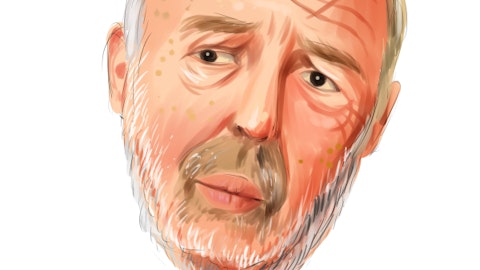Crosslink Capital is a San Francisco-based hedge fund with the main focus on technology companies. It was co-founded by Seymour Franklin Kaufman and Michael Stark back in 1989. The fund provides an additional office in Palo Alto, California. Prior to co-founding Crosslink Capital, Michael Stark worked at Roberston Stephens as a Director of Research and Equity Analyst in charge of software and semiconductor businesses. And, before joining Robertson Stephens, he was gaining work experiences at Intel Corporation’s strategic planning group. He earned an M.B.A. with honors and Distinction from the University of Michigan and a B.S. in Engineering from the Northwestern University. Michael Stark supervises all investment-related activities of the Fund, while also serving as a portfolio manager of Crosslink Capital’s emerging growth, long/short funds and all crossover funds.
Seymour Franklin Kaufman, who co-founded the firm together with Michael Stark, is now semi-retired, which means he still has some duties in the firm related to venture capital activities in various sectors, such as the internet, software, and digital media, to name a few. Before launching Crosslink Capital, Seymour Kaufman was employed as an Equity Analyst and General Partner at Hambrecht & Quist, where he was managing semiconductor, technology, and data communications industries. He earned his M.B.A. from Satna Clara University, an M.S. in Electrical Engineering from San Jose State University and a B.S.E.E. in Electrical Engineering from the City University of New York.

Crosslink Capital employs venture capital investing, which means that the company also invests in projects and businesses that are either new or in the process of expanding, in that manner supporting new entrepreneurs. Technology-related companies at all stages (from seed financing all the way to public markets), and of small to mid-cap sizes are the fund’s targets. Although this type of investing carries a certain amount of risk, when played smart it can bring fantastic gains. In any case, Crosslink Capital doesn’t only rely on this type of investing, but it also applies hedge fund investing, managing several hedge funds for its clients.
It is said that by combining these two types of investing, Crosslink Capital manages to “play both sides of the tech coin to winning effect”. The fund employs a long/short strategy and tends to obtain a board seat in companies it invests in. Its equity portfolio is usually concentrated, and according to its Plain Brochure, on December 31, 2015, the fund had around $1.6 billion in assets under management. Crosslink Capital’s philosophy must be very wise, as it had many positive returns throughout the years.
For example, its Crosslink Emerging Growth Fund, L.P. brought back a fantastic 13.45% in 2013, 7.31% in 2014, 9.74% in 2015, and then the next year it had a negative return of 4.04%. It came back strong in 2017 with a return of 13.18%, and it continued to have a positive performance in 2018, gaining 8.26% through October. Crosslink Emerging Growth Fund, L.P. had a total return of 102.49% for a compound annual return of 7.13%, while its worst drawdown was of 22.38.
Its Crosslink Partners, L.P. also had an impressive track record, delivering 12.20% in 2013, 5.73% in 2014, 9.90% in 2015, while also dropping down by 4.50% in 2016. Then, 2017 was again a good year for this fund, bringing back 13.18%, followed by 8.42% in 2018 (through October). Crosslink Partners, L.P. achieved a total return of 689.91%, for a compound annual return of 11.6%, and its worst drawdown was 27.84.
Insider Monkey’s flagship strategy identifies the best performing 100 hedge funds at the end of each quarter and invests in their consensus stock picks. This way it is always invested in the best ideas of the best performing hedge funds and is able to generate much higher returns than the market. Since its inception in May 2014, our flagship strategy generated a cumulative return of 96.9%, beating the S&P 500 ETF (SPY) by over 40 percentage points (see the details here).
On the next page, you can read more about the fund’s highest stakes and the changes it has made to its concentrated equity portfolio during the fourth quarter of 2018.





